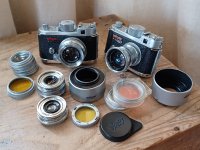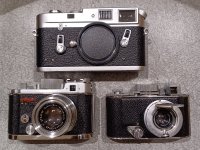largedrink
Down Under
largedrink
Down Under
Two of my three Berning Robot II "Luftwaffe" gun camera's with 7.5cm f/3.8 Tele-Xenars

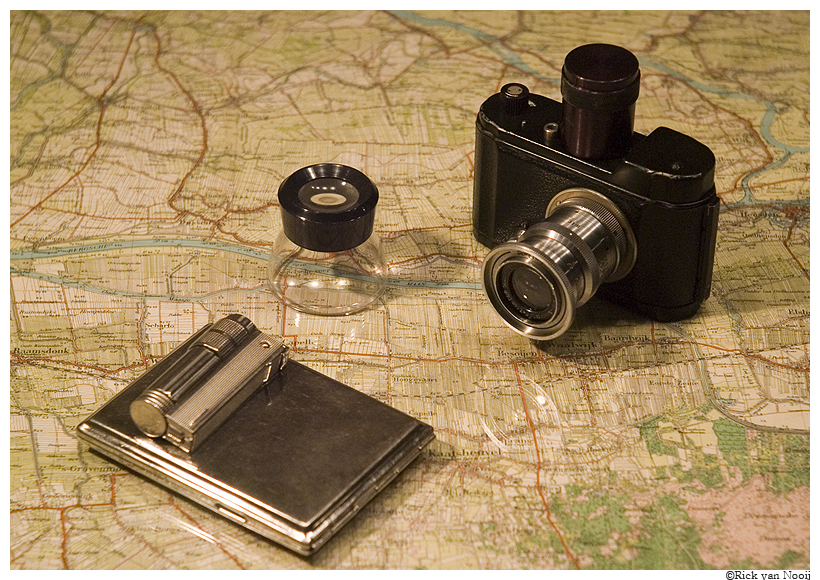
This one was restored by former Berning employees a few years back. A gift from someone over at Photo.net.
All three were GI trophy camera's from World War 2
Those black Luftwaffe Robots look amazing.
Godfrey
somewhat colored

This one was restored by former Berning employees a few years back. A gift from someone over at Photo.net.
Was that Fritz und Andreas Kergl of ROBOT Kameradienst in Düsseldorf? They refurbished my 1940 Robot II.
G
Nitroplait
Well-known
Rick, They are finderless as far as I can see - have you found a way to use them?Two of my three Berning Robot II "Luftwaffe" gun camera's with 7.5cm f/3.8 Tele-Xenars
All three were GI trophy camera's from World War 2
Does these Tele-Xenars have any special features compared to regular production?
I assume by "gun camera" you mean those mounted on planes to document the damage done after bombings etc?
It is my understanding that the long winding shaft allowed for 50 shots on a full wind-up - vs 25 shots on the regular models. The framecounter goes up to 55, so I would imaging the Luftwaffe cameras would have the capacity to shoot the whole film.
It amazes me how much stored energy such a tiny camera can hold. I was honestly very concerned when winding my Star for the first time "how can such a little thing take so much torque?" but they seem to be extremely robust.
I haven't tested with film; but it seems like the number of frames pr second is only limited by how fast you can flip your finger up and down on the shutter release.
largedrink
Down Under
I haven't tested with film; but it seems like the number of frames pr second is only limited by how fast you can flip your finger up and down on the shutter release.
According to my Robot Guide: "...up to 6 or 8 exposures per second". That would require an incredibly fast finger.
Nitroplait
Well-known
According to my Robot Guide: "...up to 6 or 8 exposures per second". That would require an incredibly fast finger.
That's amazing!
Mr_Flibble
In Tabulas Argenteas Refero
Was that Fritz und Andreas Kergl of ROBOT Kameradienst in Düsseldorf? They refurbished my 1940 Robot II.
G
Yes. They had to stop their business for a while shortly after refurbishing mine in record time. Though I've heard they (or at least one of them) is still doing repairs.
First time I used used the "V" formed between the Winder shaft and the 'finder housing' as a sort of 'iron sight'. Worked reasonably well despite not having any frame of reference. After that I crafted a sort of rudimentary wireframe finder for it.Rick, They are finderless as far as I can see - have you found a way to use them?
Does these Tele-Xenars have any special features compared to regular production?
I assume by "gun camera" you mean those mounted on planes to document the damage done after bombings etc?
They had a number of uses, from Gun and Bomb-sight camera, to aerial reconnaissance cameras.
The BF-109 and FW-190 fighters had provision for them to be mounted in the wing to be used as actually Gun Sight Aiming Point cameras, with a solenoid hooked up to the trigger.
I think the manual says it could take 5 photos per second.
It is my understanding that the long winding shaft allowed for 50 shots on a full wind-up - vs 25 shots on the regular models. The framecounter goes up to 55, so I would imaging the Luftwaffe cameras would have the capacity to shoot the whole film.
That is my understanding as well. The tall winder version actually houses two regular spring units stacked on top of each other.
It amazes me how much stored energy such a tiny camera can hold. I was honestly very concerned when winding my Star for the first time "how can such a little thing take so much torque?" but they seem to be extremely robust.
I've never dared wind any of mine up to full capacity. When I use mine I usually give it a couple of turns. The spring power is mainly required for the film transport so you can hear when it is time to add another turn or two.
Mr_Flibble
In Tabulas Argenteas Refero
I really need to load up some film and shoot with one of mine these days.
Last time was 2015!
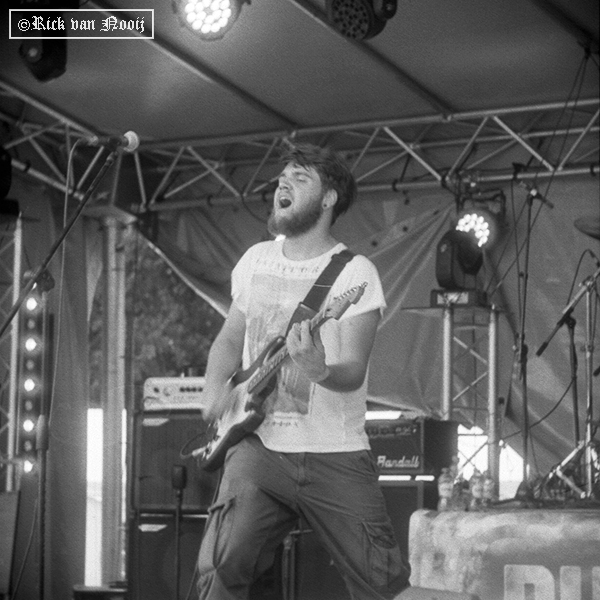
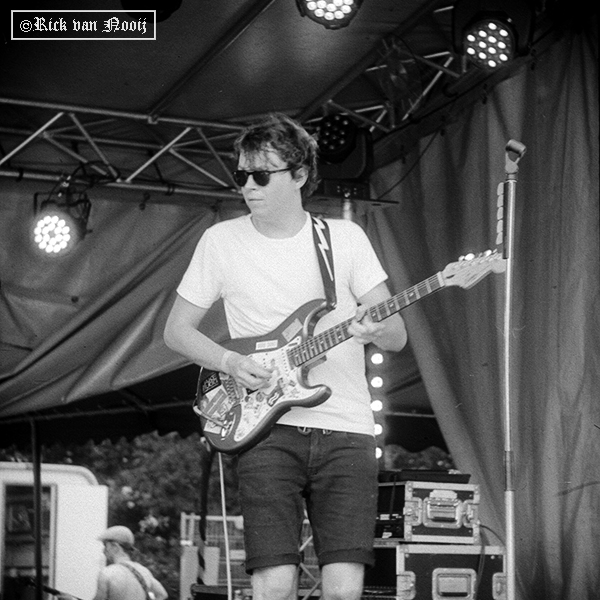
Last time was 2015!


largedrink
Down Under
largedrink
Down Under
Godfrey
somewhat colored
Yes. They had to stop their business for a while shortly after refurbishing mine in record time. Though I've heard they (or at least one of them) is still doing repairs.
...
It's good to hear that. I know Fritz is quite old ... they refurbished the Robot II and a Robot Star for me somewhere around 2014-2015, I communicated through his daughter. She had told me she didn't know how much longer he would be able to continue working on the cameras.
My first roll with the Robot II (before refurbishment) in 2013. I see I've mis-typed the year ... it's a '41, not a '40.

Later photos I've made with it, after refurbishment, have been even nicer.
G
Godfrey
somewhat colored
Muggins
Junk magnet
They had a number of uses, from Gun and Bomb-sight camera, to aerial reconnaissance cameras.
The BF-109 and FW-190 fighters had provision for them to be mounted in the wing to be used as actually Gun Sight Aiming Point cameras, with a solenoid hooked up to the trigger.
I think the manual says it could take 5 photos per second.
.
Somewhere I've seen a photo of a smashed Robot found when a WW2 fighter plane crash site was excavated. Don't ask me where, though.
And thank you all for not taking me to task for getting Maier wrong. Much appreciated!
Mr_Flibble
In Tabulas Argenteas Refero
Somewhere I've seen a photo of a smashed Robot found when a WW2 fighter plane crash site was excavated. Don't ask me where, though.
Probably here: http://www.robot-camera.de/
Muggins
Junk magnet
Probably here: http://www.robot-camera.de/
I think you may have nailed it, thank you!
largedrink
Down Under
My 1937 Robot I has some quirky and interesting features:
Rotating viewfinder for stealth photography, shown here rotated with the blue window which apparently improves contrast.
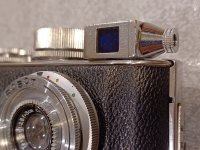
Internal yellow-green filter controlled by a small dial around the shutter speed control.
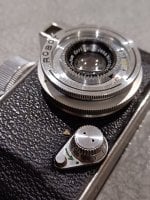
This is the filter in position:
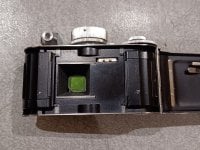
A mechanical shutter lock. The dial below the spring motordrive winder can be rotated under the wide shutter release knob to prevent it from being depressed.
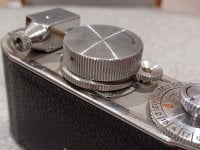
Rotating viewfinder for stealth photography, shown here rotated with the blue window which apparently improves contrast.

Internal yellow-green filter controlled by a small dial around the shutter speed control.

This is the filter in position:

A mechanical shutter lock. The dial below the spring motordrive winder can be rotated under the wide shutter release knob to prevent it from being depressed.

R_a_feldman
Member
1940 Berning Robot II
How did you date your camera? Is there a guide linking Robot serial numbers to year of manufacture?
largedrink
Down Under
I have never seen an authoritative source but this site is the most useful I find:
http://corsopolaris.net/supercameras/robot/robot1.html
Dating the lens can also help refine the camera age.
http://corsopolaris.net/supercameras/robot/robot1.html
Dating the lens can also help refine the camera age.
Godfrey
somewhat colored
How did you date your camera? Is there a guide linking Robot serial numbers to year of manufacture?
I mistyped in this thread: mine is a 1941 camera. And Fritz at Robot Kameradienst (the gentleman who serviced it) told me the year. I don't know whether there's an official list of Robot serial numbers and years of manufacture available.
According to Fritz, my camera is the same as the 1939 Robot II (shown on this page), but mine was one of the few 'standard, consumer' examples made after the factory was tasked to produce cameras for the military during the war years. Evidently, the 'consumer' models were often given to officers as bonuses for good service...? Fritz dated it as approximately 1941 based on some details of the internals. Of course, it is no longer 'original' because I asked Fritz to update it to have the same film load capability (using a standard 35mm cassette) as the '51-'54 Robot IIa for convenience sake. (I like to use it occasionally, and having to load and reload Rapid cassettes every time is a bit more tedious than I want to deal with.
G
R_a_feldman
Member
I have never seen an authoritative source but this site is the most useful I find:
http://corsopolaris.net/supercameras/robot/robot1.html
Dating the lens can also help refine the camera age.
I tend not to trust dating the camera based on the lens, as the lens can be switched. I have a Robot II, which was made starting in 1939. The lens that came with it, a CZJ 3 1/4cm f2.8 Tessar, dates to 1937 based on its serial number. The body has a fairly late serial number (B91929), so I doubt that the CZJ Tessar is the original lens.
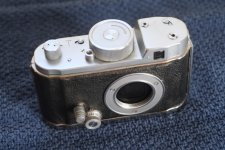
The site robot-camera.de lists a book ("RoBoT – Das Sammlerbuch" by Hans R. Grahner, mentioned at http://robot-camera.de/ROBOT_NEWS/robot_news.html) that gives serial numbers and dates, but I can't locate a copy that I can look at.
Share:
-
This site uses cookies to help personalise content, tailor your experience and to keep you logged in if you register.
By continuing to use this site, you are consenting to our use of cookies.


